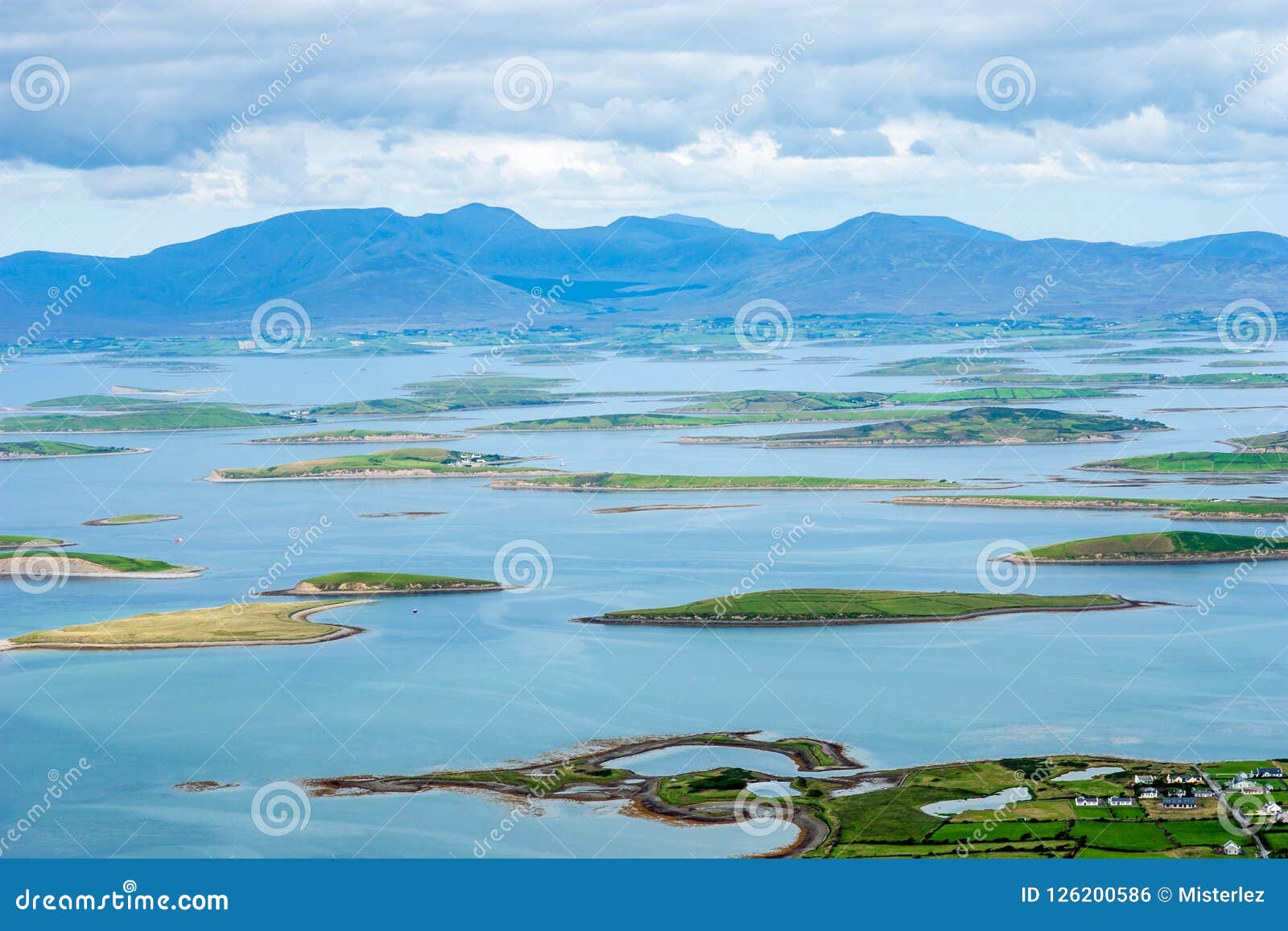
The county's offshore islands - and islands off the west coast of Ireland generally - developed their own distinct culture and traditions stretching back centuries. Geologically, the Clew Bay islands themselves are the youngest in the county, formed during the Lower Carboniferous about 350 million years ago. Clare island alone is composed of Cambrian, Ordovician, Silurian and Carboniferous terranes sutured together. Further south, the islands are much more diverse. Inishglora contains some of the oldest rocks in Ireland, at 1.75 billion years old. Those north of Clew Bay such as Achill and the islands off the Mullet Peninsula are generally of ancient Dalradian age, similar to Donegal and the Grampian Highlands. The bedrock geology of the islands is broadly divided into two groups. Islands such as those at Clew Bay are low-lying, formed when rising sea levels drowned a vast field of drumlins, while others like Clare Island and Achill are characterised by mountains and towering sea-cliffs, of which Croaghaun are the third-highest in Europe, at 688 m (2,257 ft) The geology and geomorphology of the county and its islands is among the most varied and complex in Ireland. The largest island is Achill, which extends to 148 km 2 (37,000 acres), making it Ireland's largest offshore island.ĭue to its abundance of bays, inlets and offshore islands, Mayo has the longest coastline of any county in Ireland, at 1,168 km (726 mi) or approximately 21% of the total coastline of the State. There are over 100 islands which are greater than 10 acres (4.0 ha) in area. Additionally, areas of ecological significance related to both offshore and freshwater islands, designated by the National Parks and Wildlife Service, are also listed.Īlthough County Mayo has hundreds of offshore and freshwater islands, only a handful of islands and island groups are large enough to be distinguishable on a typical map of the county, namely Achill Island, Clare Island and Inishturk, along with the island clusters of Duvillaun, Inishkea, Clew Bay and the major loughs. Included in this list are named offshore and freshwater islands as recorded by Ordnance Survey Ireland or the Placenames Database of Ireland. This page is dedicated to True, false and funny stories, they can be historic, factual or fiction.This articles lists the islands of County Mayo, the mainland of which is part of the island of Ireland. They must relate to the sea, seafaring or the west coast of Ireland and its people. Our first article is a brief profile of Graunaile by Aine Ryan, this appeared in the Mayo News on Feb 2010. Anne Chambers book is a great read and very enjoyable, especially when anchored in the lee of Graunaile’s castle on Clare Island. We were once discussing anchoring in Blasket Sound and while the rest of the crew were stating the pro’s and con’s, I went back to reading my book about going around Ireland by De Courcy Ireland, I had just got to a page about Blasket Sound, 3 ships of the Spanish Armada anchored there on their desperate bid to return to Spain in 1588, a party was sent ashore but captured by locals and hung (before the birth of Irish Nationalism), a second party were sent ashore armed, they were also captured and handed over to the English who later hung them, later that night the anchors dragged and the ships collided and sank, causing the deaths of about 1500 men, any survivors were stripped, robbed and hung! by the locals or English soldiers It is quite possible to sail around Ireland and read a book about local history for each area. I had a solemn look around and realized that the boys were arguing the toss over whether or not we anchor our boat in a mass grave! I hopped up on deck and said that we were going to Fenit for the night, no buts! Sometimes it is hard to fathom the vast history of our land, in the 1700’s Barbary pirates raided our coast and our own gang was not shy about raiding other places. the sea was the highway for thousands of years, long before the M4 and the M50. If you have something to share, please send it to us.

I’m sure everyone would enjoy the story about wharram’s catamaran being repaired in Achill. Jarlath Cunnane and Frank Guilfoyle might enlighten us.

William Maxwell’s account of the sea passage from Mulranny to Croy lodge via Bellacragher Bay in 1816 “At the Clachan of Mulranny, we struck into a pass in the mountains and turned our backs upon Clew Bay.


 0 kommentar(er)
0 kommentar(er)
